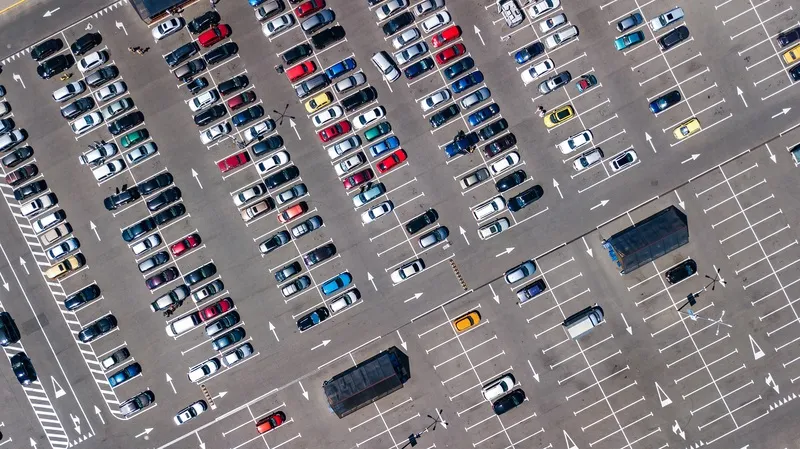Consider this: "the most important reform should be that of speed limits and the criteria by which they are set". And this: "a successful road safety solution reduces casualties and catches few people because offence rates are so low". Both statements come from the article on pages 28-30 of this issue on business models for automated enforcement. Both come from established figures in the field (respectively, Paolo Sodi of Sodi Scientifica and Geoff Collins of Speed Check Services); and both highlight the ya
July 19, 2012
Read time: 4 mins

Consider this: "the most important reform should be that of speed limits and the criteria by which they are set". And this: "a successful road safety solution reduces casualties and catches few people because offence rates are so low".
Both statements come from the article on pages 28-30 of this issue on business models for automated enforcement. Both come from established figures in the field (respectively, Paolo Sodi of Sodi Scientifica and Geoff Collins of Speed Check Services); and both highlight the yawning gap between the ideal and some of the realities of automated enforcement.
The truth is that several of automated enforcement's most important stakeholders continue to let the side down. Whether through a lack of honesty, wilful neglect or just sheer incompetence they continue to allow it to be denigrated as a money-making scam. I refer, of course, to some of those responsible for the criteria by which systems are deployed and used. Smart machines are just dumb implementers of policy, after all.
Sodi's questioning of blanket speed limits fits neatly with the point made on pages 36-37 by Technolution's Dave Marples and Andy Rooke: that enforcement technology, though impartial and relatively affordable in terms of the geographical coverage it allows, removes all subjectivity.
Yet as Marples and Rooke suggest, technology already exists which could take us from hard-edged 'enforcement' to more palatable 'compliance'. Their model of rewarding drivers with credits for good driving which can be set against the occasional debit really has merit.
But, as ever in life, things range from the sublime to the ridiculous. There are other things which continue to chafe.
Recently, I dragged myself kicking and screaming into the 21st century and acquired my first in-car navigation system. I'm actually rather embarrassed at having to admit within these pages my new-found awareness of just how good these things are; however, no-one ever said that I couldn't edit this magazine and still be a technophobe.
It brought home to me that the compliance tools with which the average driver is personally equipped are inadequate. For example, when driving there is a noticeable difference (which increases as speed increases) between the indicated speed on the nav system which I've just bought and that shown by my car's own speedometer; which am I to believe? I can watch the nav system track me through intersections in real time, so I've no doubt it's accurate, and yet when it says I'm doing 70mph, the car tells me I'm already doing 80mph. How do I explain that to an automated system? Do I just pootle everywhere at an increasingly large percentage below the posted limits? I'd actually like to get to where I'm going
One of my pet hates is The Careful Driver: that fool who carves out of a side street in front of me, obliging me to brake, and then proceeds to drive at a precise amount under the speed limit, glaring at me in the rear-view mirror all the while. The true master of the art usually manages to do this at twilight without lights on. But this is all alright, you see, because said individual is observing the limits and Driving Properly. In reality, said individual only serves to underline the absurdity of trying to deal in absolutes.
I can't in all conscience excuse poor or unsafe driving. But I do come back again and again to the appropriate use of speed rather than speed per se . I'm content that in some circumstances more speed is actually safer, as it increases driver awareness and attention. But that doesn't fit the rubric.
It all comes back to the need for better driver education. Oh, and more honesty.
In fact, let's start with a little more honesty. Please.
Both statements come from the article on pages 28-30 of this issue on business models for automated enforcement. Both come from established figures in the field (respectively, Paolo Sodi of Sodi Scientifica and Geoff Collins of Speed Check Services); and both highlight the yawning gap between the ideal and some of the realities of automated enforcement.
The truth is that several of automated enforcement's most important stakeholders continue to let the side down. Whether through a lack of honesty, wilful neglect or just sheer incompetence they continue to allow it to be denigrated as a money-making scam. I refer, of course, to some of those responsible for the criteria by which systems are deployed and used. Smart machines are just dumb implementers of policy, after all.
Sodi's questioning of blanket speed limits fits neatly with the point made on pages 36-37 by Technolution's Dave Marples and Andy Rooke: that enforcement technology, though impartial and relatively affordable in terms of the geographical coverage it allows, removes all subjectivity.
Yet as Marples and Rooke suggest, technology already exists which could take us from hard-edged 'enforcement' to more palatable 'compliance'. Their model of rewarding drivers with credits for good driving which can be set against the occasional debit really has merit.
But, as ever in life, things range from the sublime to the ridiculous. There are other things which continue to chafe.
Recently, I dragged myself kicking and screaming into the 21st century and acquired my first in-car navigation system. I'm actually rather embarrassed at having to admit within these pages my new-found awareness of just how good these things are; however, no-one ever said that I couldn't edit this magazine and still be a technophobe.
It brought home to me that the compliance tools with which the average driver is personally equipped are inadequate. For example, when driving there is a noticeable difference (which increases as speed increases) between the indicated speed on the nav system which I've just bought and that shown by my car's own speedometer; which am I to believe? I can watch the nav system track me through intersections in real time, so I've no doubt it's accurate, and yet when it says I'm doing 70mph, the car tells me I'm already doing 80mph. How do I explain that to an automated system? Do I just pootle everywhere at an increasingly large percentage below the posted limits? I'd actually like to get to where I'm going
One of my pet hates is The Careful Driver: that fool who carves out of a side street in front of me, obliging me to brake, and then proceeds to drive at a precise amount under the speed limit, glaring at me in the rear-view mirror all the while. The true master of the art usually manages to do this at twilight without lights on. But this is all alright, you see, because said individual is observing the limits and Driving Properly. In reality, said individual only serves to underline the absurdity of trying to deal in absolutes.
I can't in all conscience excuse poor or unsafe driving. But I do come back again and again to the appropriate use of speed rather than speed per se . I'm content that in some circumstances more speed is actually safer, as it increases driver awareness and attention. But that doesn't fit the rubric.
It all comes back to the need for better driver education. Oh, and more honesty.
In fact, let's start with a little more honesty. Please.









